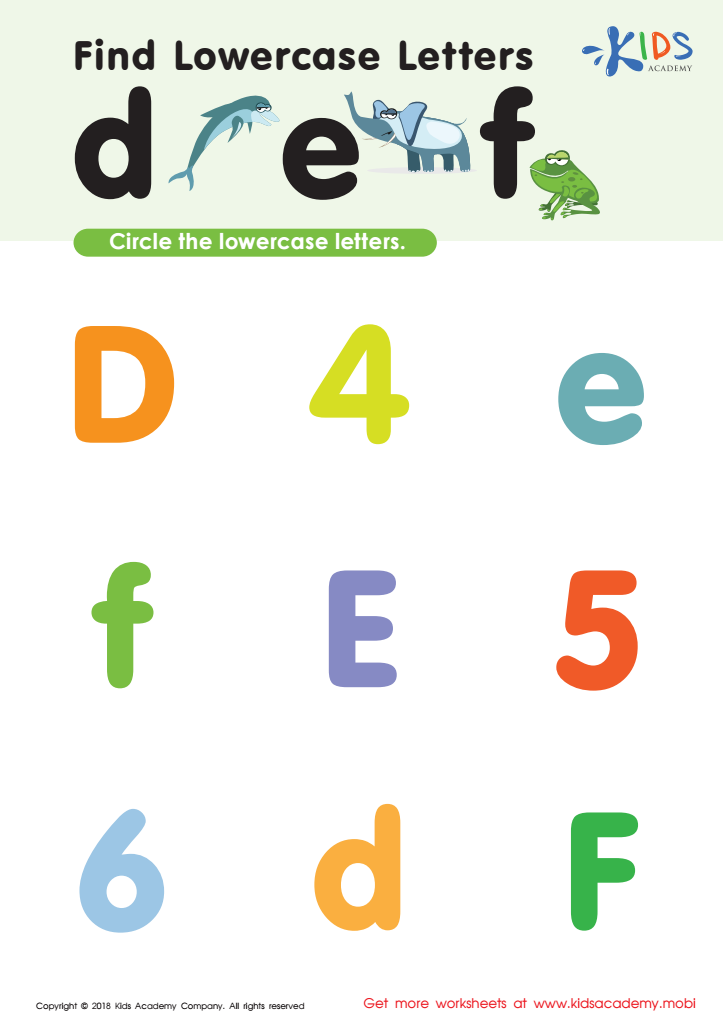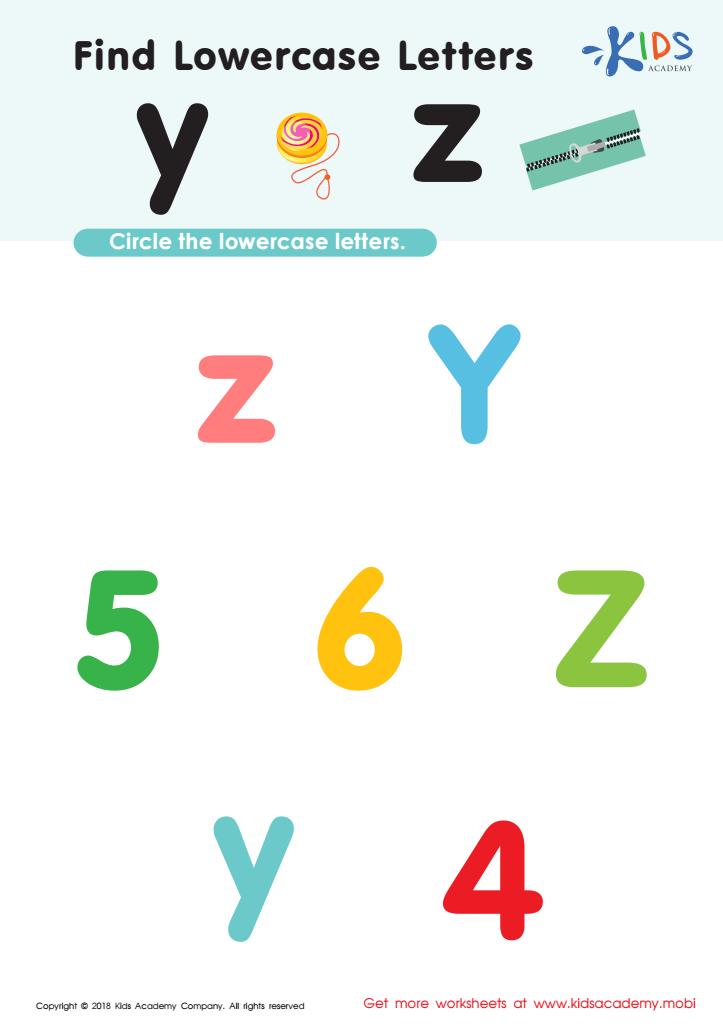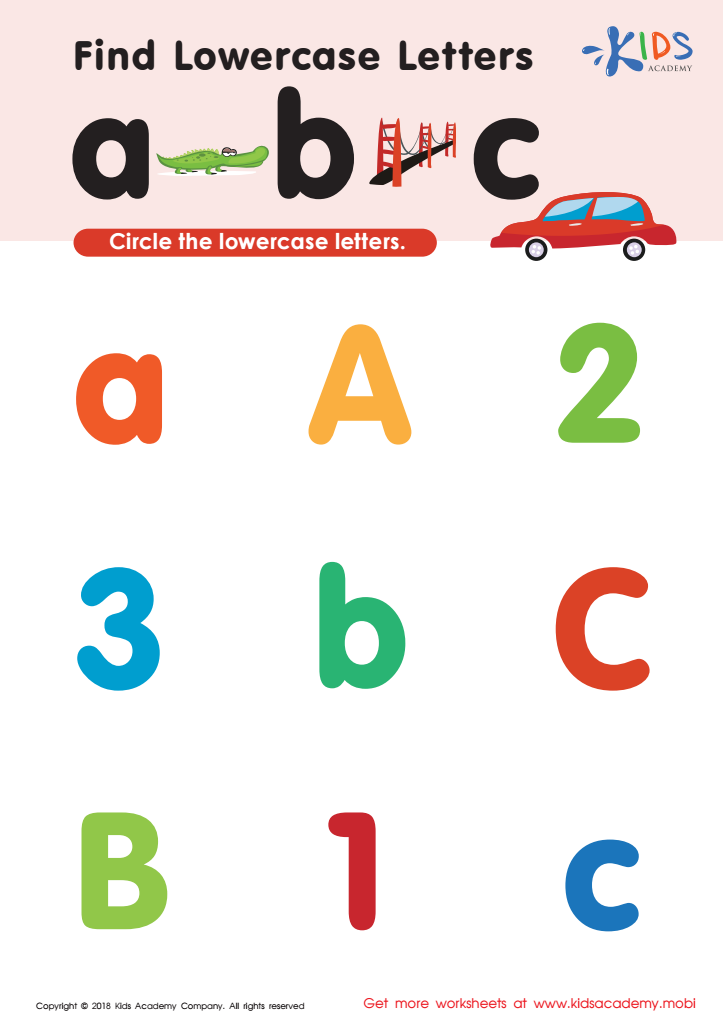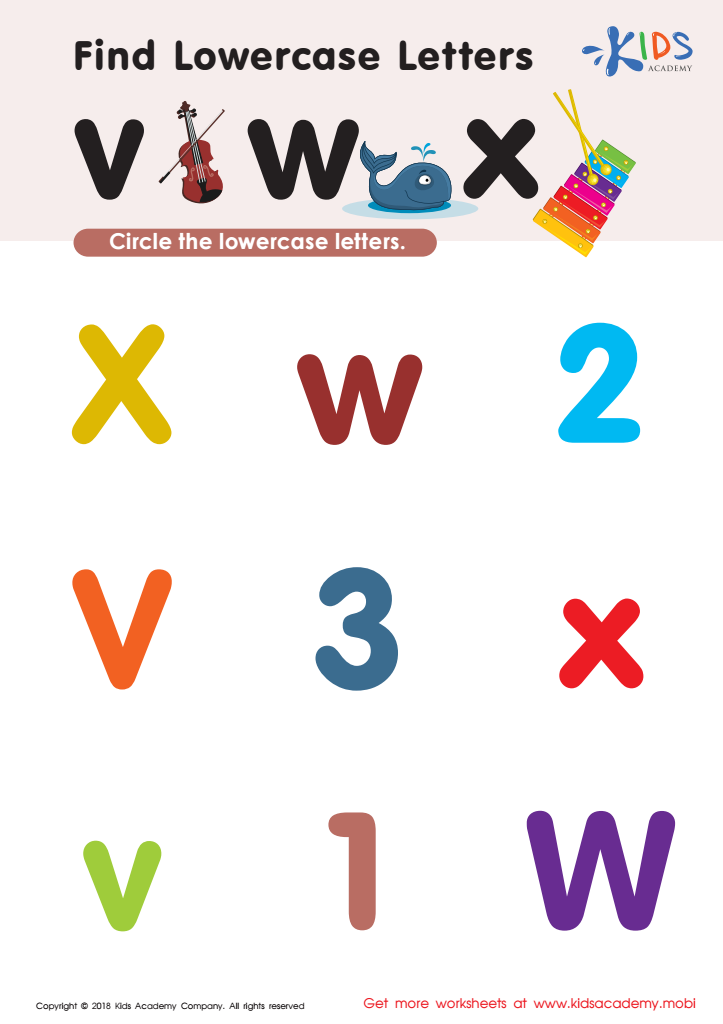Lowercase identification Normal Worksheets for Ages 5-8
4 filtered results
-
From - To
Enhance your child's literacy skills with our engaging Lowercase Identification Normal Worksheets designed for ages 5-8. These worksheets focus on helping young learners identify and familiarize themselves with lowercase letters through a variety of fun activities. Ideal for both preschool and early elementary students, our resources use colorful graphics and interactive exercises to capture attention and make learning enjoyable. Parents and teachers will appreciate the structured approach that promotes letter recognition and retention. Perfect for at-home practice or classroom use, these worksheets are a great way to support early literacy development. Start building a strong foundation in reading today!


Find Lowercase Letters d e f Worksheet


Find Lowercase Letters y z Worksheet


Find lowercase letters a b c Worksheet


Find Lowercase Letters v w x Worksheet
Lowercase letter identification is a critical skill for children ages 5-8 and serves as a foundational component of literacy development. As children begin their reading journey, knowing letters in their lowercase form helps them recognize familiar words in books, labels, and classroom materials, enhancing their reading fluency and comprehension.
For parents and teachers, caring about lowercase identification is vital for fostering a positive learning environment. Mastery of lowercase letters supports phonetic awareness, allowing children to sound out words effectively. This skill is especially important given that most text encountered in daily life—such as books, signs, and digital media—is written in lowercase.
Furthermore, strong literacy skills contribute to a child’s confidence and motivation in learning. By ensuring that children can easily identify lowercase letters, parents and teachers can set a strong foundation for further literacy skills, such as spelling and writing. Engaging educational activities that promote lowercase letter recognition help make learning enjoyable and effective, strengthening the bond between parents, teachers, and children.
In essence, focusing on lowercase identification is crucial as it empowers children with essential communication skills that will assist them throughout their educational journey and beyond.
 Assign to My Students
Assign to My Students




















